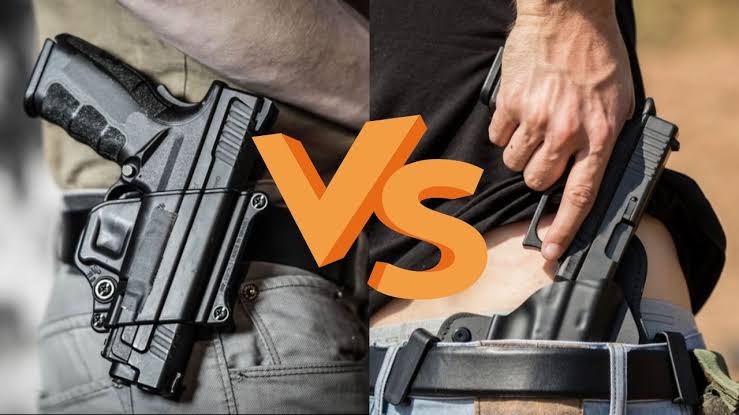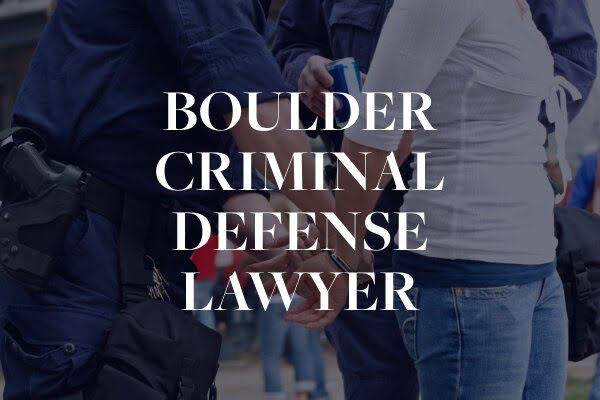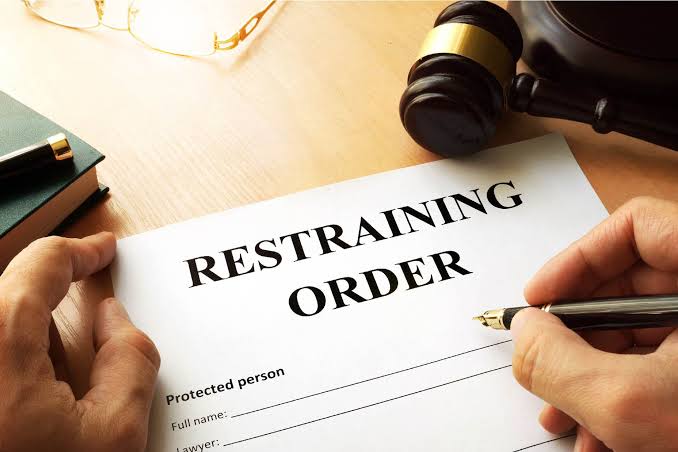What Are the Legal Differences Between Open Carry and Concealed Carry?
Carrying firearms is a significant topic within the United States, and understanding the distinction between open carry vs concealed carry is crucial for gun owners. Both practices entail particular laws and regulations that differ significantly by state and jurisdiction. This article examines the distinctions, legal consequences, and variations by state regarding these two approaches to carrying firearms.
Key Characteristics of Open Carry
The practice of openly carrying a firearm in public places is known as “open carry.” Usually, the weapon is either holstered or slung in a way that is noticeable to those around.
Visible Firearm: The main aspect of open carry is that the firearm remains in plain sight.
Different Laws by State and Jurisdiction: Rules vary greatly. Certain states permit open carry without the need for permits, whereas others enforce stringent restrictions.
Possible Limitations: Although open carry is allowed in certain states, there may be limitations on locations where it is permitted, including government facilities, educational institutions, or private enterprises.
Examples and Implications of Open Carry Laws
In states such as Texas and Arizona, open carry is typically allowed with few limitations, indicating a lenient stance. In states such as California, open carry is significantly limited, frequently necessitating particular licenses.
Although open carry can showcase a person’s right to possess firearms, it might also result in public worries or misconceptions. Interactions with law enforcement can occur often, even when no laws are violated.
Key Characteristics of Concealed Carry
Concealed carry refers to the act of carrying a firearm in a way that keeps it hidden, like under clothing or in a concealed holster, so that it is not seen by others.
Concealed Firearm: The firearm needs to be out of sight from the public.
Permit or License Obligations: The majority of states mandate that individuals secure a permit to carry a concealed weapon. Safety instruction and security checks are usually part of this.
Reciprocity Agreements: Certain states recognize concealed carry permits issued by other states; however, the terms of reciprocity agreements differ significantly.
Examples and Implications of Concealed Carry Laws
Florida and Pennsylvania serve as examples of states where concealed carry is prevalent, as long as individuals possess the required permits. Conversely, states such as New York impose more stringent criteria, which include thorough background investigations.
Concealed carry is typically viewed as less intrusive in public spaces than open carry, since it doesn’t draw attention. Nevertheless, not adhering to legal obligations for concealment may result in legal repercussions.
Key Legal Differences
The table below highlights the primary differences between open carry and concealed carry:
| Aspect | Open Carry | Concealed Carry |
| Visibility | Firearm is visible | Firearm is hidden |
| Permit Requirements | May or may not require a permit | Often requires a permit |
| Public Perception | Can attract attention or concern | Less noticeable |
| Interactions with Law Enforcement | More likely to result in stops | Less frequent interactions |
| Legal Restrictions | Varies by location and state | More uniform but still state-specific |
Discussion Points
- Permit Requirements: Concealed carry typically requires more formal licensing and training than open carry.
- Carrying Locations: Both practices often have location-based restrictions, such as schools and federal buildings.
- Law Enforcement Interactions: Open carry may draw more attention from law enforcement, even if legally permitted.
Non-compliance with either form of carry can lead to fines, license revocation, or even criminal charges, depending on the severity of the violation.
State-by-State Variations
Gun laws in the U.S. are far from uniform. Each state adopts a unique approach to open carry and concealed carry regulations.
- Permissive States: States like Vermont and Alaska allow both open and concealed carry without permits.
- States with Restrictions: California and New York have tight laws, especially when it comes to open carry.
- Mixed Approaches: States such as Texas permit open carry but require permits for concealed carry.
Understanding these differences is essential for lawful gun ownership. Always research your state’s laws and any states you plan to visit.
Conclusion
Both open carry and concealed carry come with distinct rules, responsibilities, and implications. While open carry allows for visible possession of firearms, concealed carry ensures a discrete approach. Knowing the laws in your state and any states you travel to is critical for compliance and safety.
Whether you choose to carry openly or concealed, always ensure you meet the legal requirements and stay informed about any updates to firearm laws. Contact the lawyers at McMinn, Logan & Gray to provide you the required legal guidance!
FAQs
1. What is the main difference between open carry and concealed carry?
Open carry involves a visible firearm, while concealed carry keeps the firearm hidden.
2. Do all states allow open carry?
No, some states restrict open carry or require specific permits.
3. Is a permit required for concealed carry?
In most states, yes. Permits usually involve background checks and safety training.
4. Can I carry a firearm in another state with my permit?
It depends on reciprocity agreements between states. Always verify before traveling.
5. What happens if I violate carry laws?
Penalties range from fines to criminal charges, depending on the violation.







